In recent statements and writing, Peter Kareiva, chief scientist with The Nature Conservancy, distorts history, ignores the successes of modern conservation, and undermines the moral and philosophical foundations of the movement. Do his views reflect the views of his employer?
Photos and writing © Chris Madson, all rights reserved
Defining conservation
PETER KAREIVA, CHIEF SCIENTIST WITH THE NATURE CONSERVANCY, RECENTLY DECIDED THAT IT WAS time to deliver a new message about conservation. He began late in 2011 with an article in the Breakthrough Journal. Since then, he has taken other opportunities to publicly restate the fundamental thesis of this article: that “by its own measures, conservation is
failing.” He and his co-authors argue that the only way conservation can succeed is “to embrace marginalized and demonized groups and to embrace a priority that has been anathema to us for more than a hundred years: economic development for all.”
Kareiva’s argument in support of these observations isn’t entirely without merit, but much of it misrepresents history, ecological fact, and political reality. If his views were to serve as the sole basis for conservation in the next century, they could result in a staggering loss of biodiversity as well as significant long-term damage to our prosperity and well-being. For that reason, I think it’s important to examine his argument in detail.
First, an issue of definition: What does Kareiva mean by the term “conservation”? In the first paragraph of his Breakthrough essay, he writes that “biodiversity on Earth continues its rapid decline.” In the second paragraph, he adds that “conservation is losing the war to protect nature despite winning one of its hardest fought battles— the fight to create parks, game preserves, and wilderness areas.” Later on in his essay, he offers this definition: “Conservation is widely viewed as the innocent and uncontroversial practice of purchasing special places threatened by development.” Since he makes no effort to broaden this definition, I have to conclude that he accepts it.
The lack of historical perspective and ignorance of recent conservation efforts reflected in this definition are breathtaking. It’s certainly true that American conservationists have long been concerned about the loss of species, the rich variety of living things modern ecologists refer to with the faintly clinical term, “biodiversity,” but the earliest and most effective efforts to maintain species of wildlife were not, as Kareiva suggests, based on establishment of parks or other “very limited ecological systems.” They were legal and ethical restrictions on overharvest of game animals that were first adopted in the early seventeenth century and covered entire jurisdictions, colonies, and eventually states. These legal steps were soon followed by the work of natural historians to find and classify wild animals and plants— men like John Lawson, Mark Catesby, the Bartrams, and other pioneer scientists traveled thousands of miles through the American wilderness to record the unique flora and fauna it contained. Even in the eighteenth century, the conservation movement was extensive in its focus, not intensive as Kareiva suggests.
By the mid-1830s, George Perkins Marsh was espousing the importance of preserving timber and other kinds of ground cover to avoid the loss of topsoil. Published in 1861, his volume, Man and Nature, laid out the practical reasons for restraint in the exploitation of renewable resources. In 1872, Arbor Day was established, launching a nationwide effort to plant trees to improve habitat for people as well as wildlife. In 1885, Congress created the Division of Economic Ornithology and Mammalogy, which quickly launched a successful effort to convince Americans of the value of nongame birds in the control of insects.
By the time Gifford Pinchot (or his friend Overton Price) defined the term “conservation” as the sustained-yield use of natural resources in 1907, Americans had been talking about the idea and implementing it for at least a century and, in some cases, much longer. While John Muir championed a more preservationist view of the natural world in the late nineteenth century, Pinchot and Teddy Roosevelt were advancing a very anthropocentric vision that managed the natural world around human activities for the benefit of man.
Of course, the American concept of the national park also arose in the nineteenth century, but it’s important to recognize that the enabling act for Yellowstone, the world’s first national park, defined the area first as “a public park or pleasuring-ground for the people.” While “the people” clearly did not include the native Americans who lived in
Yellowstone or the settlers, market hunters, and loggers in the vicinity who wanted to exploit the land inside the park, the politicians who created the reserve were fully aware of the need to define some benefit the park would have for the average citizen. Kareiva’s essay implies that conservationists have somehow neglected the practical politics of parks and reserves, which is ridiculous on its face— Yellowstone and the rest of America’s parks would not exist if the political ramifications of their creation hadn’t been carefully balanced.
It’s also worth noting that the park would probably never have been established if it hadn’t been for the support of Jay Cooke, the president of the nascent Northern Pacific Railroad. Cooke recognized that the park would be a valuable tourist attraction along the route he planned between Minneapolis and Seattle, and he brought significant money and political pressure to bear in the effort to sell Congress on Yellowstone. The nation’s first park was more an exercise in economic development and recreation than it was an effort to preserve a wild landscape.
The national wildlife refuge system began with the establishment of Afognak Forest and Fish Culture Reserve in 1891, thanks to the efforts of conservationists. Today, the refuge system has grown to 150 million acres with another 677,000 acres of wetlands to support ducks, geese, other waterbirds, and hundreds of other species of wildlife. The compromises that were required to create this system of wildlife habitat included significant provisions for a spectrum of human uses,
and the negotiations over the activities that are allowed on refuge lands continue to this day. Oil and gas drilling, grazing, and farming are allowed on refuges where these activities are deemed to be consistent with the mission of the refuge, and the refuge system supports a variety of recreational pursuits that are important to local economies. While these areas are fairly small in comparison to the size of the nation as a whole, they are immensely productive— without them, populations of many North American birds would be a fraction of their current size— and they clearly consider human economic interests as well as the goals of wildlife conservation.
The Migratory Bird Treaty Act was adopted by Congress and signed into law in 1918, an unmistakable sign that its supporters had accurately gauged the political climate and that a large body of Americans supported the sweeping protections it mandated. The legality of the act was subsequently challenged in federal court, and the Supreme Court upheld its constitutionality. Politically and legally, the act passed muster with Americans, who seemed to recognize both the intrinsic worth and the economic and recreational value of the birds it protected.
Then there is the conservation title of the American Farm Bill. This group of programs traces its roots back to the work of Hugh Bennett and the infant Soil Conservation Service in the 1930s. It compensates landowners for taking a variety of actions that help conserve soil, improve water quality, and provide habitat for a host of wildlife species, particularly grassland birds, a group that has come on hard times in the last sixty years. These are voluntary programs that draw huge support from local communities as well as landowners and conservationists. It would be hard to imagine a more cooperative, human-centered effort on behalf of wildlife and the environment.
This is just a sampling of the salient nationwide conservation efforts that have supported wildlife in the United States for a century or more. There are many other smaller-scale efforts as well, carried out by states and communities with the full participation of affected people. Suggesting that any of these efforts could even begin without public support and involvement is ludicrous.
The long history of American conservation does not bear out Kareiva’s notion that the movement’s main focus has been the establishment of parks and preserves that are more or less off-limits to people. I can only conclude that Kareiva was speaking to a small sliver of modern environmental activists when he drafted his essay and that he was focusing on conservation work outside of North America.
While I share some of his concerns about some of the proposals environmental activists make, I can’t share his apparent conviction that they represent the will or primary focus of the entire conservation movement. His use of the broad brush utterly ignores the accomplishments of past conservationists and unfairly impugns the motives and actions of their modern counterparts. With his comments on American parks, he invites me to consider the history of the conservation movement in the United States— why, then, does he ignore the main currents of that history?
Fragile nature
Kareiva has another bone to pick with modern conservationists. “Ecologists and conservationists have grossly overstated the fragility of nature, frequently arguing that once an ecosystem is altered, it is gone forever,” he writes. Not so, argues Kareiva. “Nature is so resilient that it can recover rapidly from even the most powerful human disturbances.”
Well, of course it can and nearly always does. When an existing equilibrium is disturbed, a new equilibrium eventually establishes itself, even if there is nothing left but bacteria to begin the process. However, Kareiva began his essay on this plaintive note: “Biodiversity on Earth continues its rapid decline. We continue to lose forests in Africa, Asia, and Latin America. There are so few wild tigers and apes that they will be lost forever if current trends continue. Simply put, we are losing many more special places and species than we’re saving.”
Which of these assertions am I to believe? If the living systems on earth can absorb any damage mankind can dish out, then there really is no reason for concern. In fact, The Nature Conservancy and other conservation groups can simply adopt Kareiva’s view of ecological invulnerability, declare victory, and take up other work.
Most ecologists would argue that the drastic loss of “special places and species” Kareiva mentions is dangerous to natural systems and to mankind. Most would also say that this decline is a result of our own intemperate behavior.
That’s why the term “Anthropocene” was coined: to recognize that our presence is changing the planet at a geologic scale. Elsewhere in his essay, Kareiva casually suggests that the reason the people of Easter Island disappeared was due, at least in part, to the depredations of the nonnative rats they brought to the island with them. Did the rats destroy the entire Easter Island ecosystem? Of course not. They simply destroyed the capacity of the island to support people. This microcosm should give any thinking person pause.
Over the millennia, humans have exploited many landscapes and have often found, to their sorrow, that deterioration in natural systems leads to problems for man as well as wildlife. The ancient history of the Fertile Crescent and the
Mediterranean rim is studded with examples. The Cedars of Lebanon were cut and exported; the Anatolian hills above the Tigris and Euphrates were plowed and overgrazed; the rich fields and foothills of Carthage were exposed to the erosive power of wind and rain. Native populations of wildlife like the Arabian oryx and Eurasian lion declined or disappeared, a sign that diversity and productivity in the region’s natural systems had been reduced. Eventually, the same forces that affected wild animals began to touch people.
It’s been estimated that the population of ancient Mesopotamia, the place we now know as Iraq, may have reached five million around 300 B.C. before a combination of invasion, internecine struggles, and the deterioration of the region’s soils brought about a collapse. The area would not see that many people again for 2,000 years when the growing income from recently discovered oil generated economic development the land itself could still not support.
Similar examples of collapse can be found in the archaeological record of the New World. The Mayan civilization flowered and fell in the jungles of Central America, the victim of wars that may have had many proximate causes but were driven ultimately by a shortage of food. The Mayans kept no species lists documenting the biodiversity around their city-states, but it’s not outlandish to guess that it declined as agricultural pressure intensified.
The great Mississippian culture of eastern America’s woodlands was already in decline before Columbus arrived in the New World. Analysis of the physical condition of the people in the great native city of Cahokia shows that the quality of diet had deteriorated over several centuries. At the end, people were smaller in stature and suffered from a variety of diseases caused by dietary deficiencies. Local populations of deer, waterfowl, and fish had been overexploited, and so generations of people suffered.
Kareiva argues that the loss of the passenger pigeon and the American chestnut had no lasting effect on the great forests of eastern North America. I reply that, as an ecologist, he knows better than that. He knows that the loss of five billion passenger pigeons and the elimination of the most important mast-bearing tree in that forest must have had huge effects on the organization of the system. The trophic cascades would have reached into every nook and cranny of that forest— if there had been any old-growth forest left. In fact, the mature deciduous forest of the East had essentially been eliminated by the beginning of the twentieth century. Our failure to see the effects of the passenger pigeon’s extinction and the loss of the chestnut has more to do with the shortcomings of the science of the time than it does with ecological reality.
North America is filled with more recent examples of damage caused by the removal— or addition— of just one species. The loss of ninety-eight percent of the black-tailed prairie dogs on the continent has strained several other wildlife
species: black-footed ferrets, northern swift foxes, ferruginous hawks, mountain plovers, and others.
The introduction of cheatgrass to the West’s sagebrush basins has shifted the fire regime and plant composition on entire landscapes, causing drastic decreases in sage grouse, Columbian sharp-tailed grouse, Brewer’s sparrows, sage thrashers, and pygmy rabbits as well as declines in populations of mule deer and pronghorns.
The effective removal of the canebrake, America’s native bamboo system, has brought the Bachman’s warbler and the eastern panther to the brink of extinction and has caused declines in other wildlife species as well.
Some of these ecological shifts have had little apparent effect on human activities; others have had an immediate and lasting impact. Unfortunately, our technical analysis isn’t sophisticated enough to predict what ecological damage might touch our economic interests and what damage does not. That’s why Aldo Leopold’s counsel on conversion of ecosystems still has force: “To keep every cog and wheel is the first precaution of intelligent tinkering.”
The most succinct definition of conservation is the wise use of natural resources. That means sustainable use of renewable resources and particular care with those resources that are finite and nonrenewable. Buried in Kareiva’s rhetoric, I sense a commitment to that idea, but when he casually advocates “economic development for all” without any qualification or caveat, I worry that many people will interpret his statement as license to take all they can, as fast as they can.
Earth simply cannot support nine billion people whose demands on natural resources are anything like the demands a typical American makes. There are those who believe that technological breakthroughs will free us from the bioenergetic bonds that threaten to confine us, but those breakthroughs haven’t yet emerged, and even if they do, our history as a species suggests that we will continue to grow until restrained by the shortage of some other key resource. If a new ultra-clean energy source removes the limits we currently face, we’ll explode until the next limit comes to bear. Justis von Liebig saw the hard reality of that nearly 200 years ago.
The metaphor of the miner’s canary is apt. When we exploit natural systems to the point that many wildlife populations are declining and some are in danger of extinction, we may well be on a path that threatens our own well-being. In his essay, Kareiva points out that, in the future, conservationists will have to find ways to manage “working landscapes” for some kind of “conservation value.” He offers this as a startling insight when, in fact, a host of conservationists has been working to do just that for more than 150 years. What he fails to mention is the importance of a more enlightened view of the value of a whole range of conservation options, from inviolate reserves to small pockets of easily accessible urban wildscape.
Wilderness and its spokesmen
In a lecture given for the Distinctive Voices @ the Beckman Center in November of 2011, Kareiva expanded on many of the ideas he presented in his Breakthrough essay. Early in the talk, he took up the concept of wilderness and wilderness preservation. He picked out a couple of “environmental writers” to attack their idea that people really value the wilderness experience. The first was Ed Abbey.
He mocked Abbey for writing about the stars over the desert: “Instead of loneliness, I feel loveliness,” he quoted from Desert Solitaire. He then went on to read a passage from Abbey’s journal, written at the same time, in which Abbey complained about how much he missed his wife. Kareiva is struck by the irony of Abbey juxtaposing these two sentiments.
Ed Abbey had some good things to say about the desert Southwest, a landscape that commands little respect, but passing him off as a leader in defining the concept of wilderness is ludicrous. Consistency in reasoning or emotion, nuance in perception, were things Abbey never troubled himself to find. There are dozens of writers and thinkers who deserve notice for their philosophical analysis of man’s place in nature before Abbey. However, Ed does serve as a convenient straw man for Kareiva to push over.
Following his sally on Abbey’s journal entry, Kareiva goes on to add a couple of other names to his list of eco-communicators: “Emerson and Hawthorne, [two] of our great naturalist writers.”
I guess it’s been a while since Kareiva has read the works of either writer. While it’s true that Ralph Emerson wrote an essay he called “Nature,” I think it’s fair to say that he was happy to contemplate the natural world through a stout pane of glass. For Emerson, nature was just another metaphor in the service of broader philosophical discourse.
Hawthorne, one of America’s first novelists, never bothered himself with the concept of the environment in his major works, except as a stage for the inquiries into human morality and behavior that were his central theme. Hardly an eco-philosopher.
Then Kareiva mentions Thoreau. Here, finally, he has found a man who thought deeply about humans and their relationship with the land.
“I bet a lot of you had to read Walden Pond,” Kareiva remarked in his speech. “‘In wilderness is the preservation of the world,’ and he wrote about his cabin and his pond and all that. Yeah, right! His mom came and did his laundry every
weekend. Yet he painted this picture.” The picture of Thoreau Kareiva seems to have in his own mind is a man who abandoned civilization for the life of a hermit communing with the trackless wilderness.
It’s hard to believe anyone could pack so much misinformation into such a small package. Let’s start with the smallest items first: The name of Thoreau’s best-known book is Walden, Or Life in the Woods, not Walden Pond. Unlike Emerson, Thoreau was qualified to write about a “life in the woods”— he actually spent quite a bit of time outside, most of it walking or working as a surveyor in the country around Concord, Massachusetts, but some of it in what was then bona fide wilderness in Maine.
Contrary to Kareiva’s implication, Walden was never intended to be a defense of wilderness. In the first paragraph of the book, Thoreau laid out the setting: “When I wrote the following pages, or rather the bulk of them, I lived alone, in the woods, a mile from any neighbor, in a house which I had built myself, on the shore of Walden Pond, in Concord, Massachusetts, and earned my living by the labor of my hands only. I lived there two years and two months.” So much for man communing with wilderness.
His purpose in this experiment? “I went to the woods because I wished to live deliberately, to front only the essential facts of life, and see if I could learn what it had to teach, and not, when I came to die, discover that I had not lived.” Such were Thoreau’s motives in retreating to Walden Pond.
All this is somewhat beside the point, however, because the quote Kareiva cites does not appear in Walden; in fact, it’s not precisely a Thoreau quote at all. The passage Kareiva has in mind is actually part of different essay: “Walking.” And Kareiva gets the quote badly wrong. Thoreau actually wrote: “What I have been preparing to say is that in wildness is the preservation of the world.”
The difference between Kareiva’s “wilderness” and Thoreau’s “wildness” is immense. The concept of wilderness is a matter of intense debate among conservationists and ecologists in America and around the world. It’s a debate worth having, a debate Kareiva seems anxious to join. He would have served himself and his audience far better if he had been careful to confine himself to that issue and left Thoreau out of the discussion.
Americans have a long history of valuing wildness, even as they settled the wilderness, and over the last century, that value has been confirmed by philosophers and scientists alike. In his Breakthrough essay, Kareiva implies that he’s quite concerned about maintaining as much of the earth’s biodiversity as possible. No serious ecologist or conservationist would disagree. And Thoreau’s famous line is as lucid a statement of that concern as I’ve ever read; in fact, it could serve as the mission statement for Kareiva’s current employer. Why, then, does Kareiva misquote and impugn it?
It’s particularly ironic that Thoreau’s first purpose in “Walking” is to encourage people to take time every day to get out of the house and office for a walk in the woods. I assume this is an activity Kareiva would also advocate. Thoreau, as a man of his time, paid homage to the West, that symbol of freedom and potential in nineteenth-century America, but he
began and ended in the bucolic surroundings of Massachusetts: “From many a hill I can see civilization and the abodes of men afar,” he wrote. Like any other commodity, the wild experience becomes more valuable as the supply dwindles, a consequence of supply and demand Thoreau, on a coastal landscape that had been settled for 200 years, had already begun to see in 1840.
As human population grows, the chances to preserve large tracts of unworked land will fade away. “Quit romanticizing,” Karevia says. “The notion of untouched wilderness— it just doesn’t exist anywhere. . . . We’ve touched every corner.”
No informed conservationist would disagree. Unfortunately, Kareiva’s attack on the entire idea of preserving wilderness without any stated exception raises the question of whether we should bother to hold onto any wilderness at all, even the fragments that have already been set aside. He’s right in pointing out that no point on the earth’s surface has remained untouched by man, but I challenge his implication that this means there is no wilderness left. I can tell the difference between the North Slope of the Brooks Range and a WalMart parking lot. Both of them are extreme environments inhabited by a few tough pioneering species; both have been altered by human activity, but the North Slope offers me things the parking lot does not, even if I never find my way to the shores of the Beaufort Sea.
Kareiva raises moral objections to the idea that humans have been displaced to establish many of the world’s parks and wildlife reserves. It’s a legitimate concern that needs to be considered with care every time a new park is contemplated. Kareiva is worried about the possibility that the Amazon might be turned into a gigantic reserve, off-limits to people. At least, off-limits to everyone but the tribes native to the Amazon basin. That is a difficult moral question, indeed.
Is it better to preserve the forest and the wildlife and human lifeways the forest supports? Or is it better to sacrifice the forest and its tribes in the name of economic progress for the rest of the nation and the world? Is it better to shower the native tribesmen of the forest with the benefits— and ills— of twenty-first-century technology or leave them to make their own way in the paths of their ancestors? Do we have the right to make such choices for them? Do we have the right to even offer such choices?
As I write this, the New York Times has reported that natives of the Amazon region are being murdered by outsiders who want unlimited access to Brazil’s forests. Americans should recognize the process, since it’s the same approach we took to the issue of native inhabitants for almost 400 years. Was it right then? Is it right now? Like all the important moral debates, this one seems destined to play out in the twilight between right and wrong. Certainly not the simple choice Kareiva implies.
On a much smaller scale, consider the example of Central Park, a relatively wild reserve in the middle of one of the world’s largest cities. What is an acre of real estate in Central Park worth on today’s market? Would New Yorkers be better off without the park? Or is the value of the reserve worth the foregone income for the city and its residents?
I submit that we are far from finished with these questions. While we look for ways to incorporate wildness into the warp and weft of modern life, we would cheat ourselves if we stopped thinking about places held in common ownership where the scale of human activity is reduced and the geological and ecological character of the land is emphasized. Places where we can walk, as Thoreau suggested, through “some retired meadow” in the setting sun. Call them what you want: quiet places, wild places, even wilderness; they are important as storehouses of biodiversity and as refuges for the human spirit.
Gloom and doom
In his Beckman lecture, Kareiva raises his voice against what he calls “the doom-and-gloom thing.” According to Kareiva, this is the conservationist’s knee-jerk approach to framing any issue of land management, claiming that the world is about to collapse before our eyes unless something is done. He’s certainly right when he argues that the potential damage to the land is too often exaggerated and that stretching the truth can undermine support for conservation.
During the Beckman lecture, he remembered visiting Yellowstone National Park as a child: “I went when I was a kid with my family. There were no wolves or grizzly bears, and there weren’t many buffalo.” He goes on to report the recovery of grizzlies and bison as well as the reintroduction of wolves.
Dr. Kareiva finished his bachelor’s degree in 1973. If he started his undergraduate work straight out of high school, that means he’s a year younger than I am— chances are good that the two of us first visited Yellowstone about the same time, in the decade of the 1960s. But the two of us saw different realities.
There were, in fact, no wolves documented in the park in the 1960s, but there were grizzlies— the park estimated that there were between 200 and 250 in that period. There were also bison— between 350 and 1,000, according to park estimates. And so the bad old days Dr. Kareiva describes in Yellowstone weren’t quite as bad as he suggests, and he seems guilty of exactly the kind of eco-exaggeration he decries elsewhere.
Kareiva also mentions a trip he took as a child with his father: “Dad took me to Pittsburgh. I was about twelve, and the three rivers in Pittsburgh were so polluted you didn’t go near them. It stank. People didn’t want to live along the river. Now they have bass fishing contests in the three rivers. Real estate is at prime, and it’s a wonderful place to run.”
Clearly, the situation in Pittsburgh in the 1960s fell somewhere short of “doom,” but as Kareiva describes it, the condition of its rivers was well out on the scale of “gloom.” He offers the anecdote as an example of the kind of progress that can be made when we put our minds to the task, which is fair enough, but he fails to point out that the Clean Water Act and its precursors were controversial in their time— their adoption was the result of a lot of “doom-and-gloom” rhetoric, verbal and printed, that motivated Americans to make a change.
As upset as Kareiva claims to be with the “doom-and-gloom” claims of rabid environmentalists, these excerpts show that he’s not above engaging in a little doom and gloom himself when he feels the circumstances call for it. Nor should he be.
Doom-and-gloom rhetoric has been responsible for the passage of many of our most important conservation and environmental laws: the Migratory Bird Treaty Act, the Bald Eagle Protection Act, the Endangered Species Act, Federal
Land Policy and Management Act, the Surface Mining Control and Reclamation Act, the Clean Air Act, the Clean Water Act, the National Environmental Policy Act, and many others, federal and state.
In his lecture, Kareiva argues that the dams on the Snake and Columbia rivers in the Pacific Northwest aren’t a major obstacle for wild salmon on those rivers: “The federal dams have been so well engineered, they’re really not that much of a problem for the salmon. The private dams are a huge problem. Massive federal investments have made the federal dams not such a problem.”
The modifications that have been made in dam design in the Columbia River drainage have helped salmon, although there are experts who would argue that the dams still constitute a profound threat to wild salmon stocks, especially on the upper Snake, but there would have been no massive investment in these modifications if it hadn’t been for the “doom-and-gloom” rhetoric of two generations of conservationists. The same can be said of other modifications in structures and industrial processes that government and corporations have adopted— if these entities aren’t held accountable when they’re causing harm, they have no incentive to remedy it.
The bad news is that there is a lot of bad news on the conservation front. Kareiva is right to point out that conservationists need to showcase successes and hold out hope for the future. But in an era when a growing majority of humanity is estranged from the land, conservationists have to talk straight about damage to the planet as it occurs or people will simply not be aware of it.
I find it interesting that, after attacking many of the dire, but inaccurate, predictions of environmental doom that have been made over the last generation, Dr. Kareiva freely says, “Climate change predictions are NOT deeply flawed.” I think he’s right, but if there’s a more daunting body of information than the emerging analysis of climate change, I haven’t seen it. If the predictions are right, we’re irrevocably committed to a century or more of climatic shifts that will generally cause intense difficulty for most people and a spectrum of wildlife and wild places as well. And, if we don’t act soon to reduce our emissions, that prediction of doom and gloom could well extend for a millennium or more.
I think it’s vital that people become aware of this threat to the future. Dr. Kareiva seems to agree, but his general opposition to the expression of “doom and gloom” raises doubts about where he stands on this and many other issues.
There is a delicate equilibrium to be struck in our discussion of the planet’s ecological health. Most Americans are largely ignorant of the environmental circumstances facing them and the consequences those conditions may have for people as well as other living things. They need to know enough to get motivated but not so much that they despair. The middle ground between the two is admittedly narrow, but we won’t even take up the task of change as long as we remain ignorant.
The upshot
The list of practical reasons for maintaining biodiversity and a certain degree of wildness on earth grows with our understanding of natural processes. It’s a long list that still hasn’t been well integrated into our thinking about the future. I hope Dr. Kareiva and I agree on the importance of remedying that. But, beyond the economic and ecological justifications for conservation, there are spiritual and moral issues that need our attention.
A wise man once told me that he thought humanity would go out, not with a bang, but a whimper.
“We are an arrogant species,” he continued. “We believe we can destroy the world. There’s no way we can do that; life on earth is unimaginably tough. But there is a far more delicate thing that is in our power to destroy. Human happiness. The question is whether we’ll have the wisdom to preserve what makes us happy.”
Our kinship with the rest of life on this planet is undeniable, stretching back over more than four billion years of change and adaptation. Such ties don’t evaporate in a few generations of city living. Even the most confirmed urbanite still wears the marks of that legacy: We keep flowers on the windowsill, fountains in the lobby. Our blood pressure drops when we stroke a pet. We feel the cycle of the sun and still fear the dark. We are bound to the land in thousands of ways, many of which we no longer recognize.
I share Kareiva’s concern over “special places and species,” not only because their loss could unravel ecosystems on which we depend— though it might— but because the world would be a grayer, sadder place to live in if we lost them. This is the spiritual argument for conservation. It doesn’t rest on a foundation of hard data and economic necessity, but
that doesn’t make it any less important. Kareiva counsels conservationists to abandon this foolish spiritualism, to quit selling the idea that occasional solitude in a wild place is a balm to the human soul. I think he’s wrong. He wants to confine the conversation to our standard of living; I think we should spend some time talking about our quality of life.
There is also an obligation to be considered. Almost seventy years ago, Aldo Leopold famously championed a new ethical relationship with the land:
“A thing is right,” he wrote, “when it tends to preserve the integrity, stability, and beauty of the biotic community. It is wrong when it tends otherwise.”
It’s certainly true that conservation is generally profitable and always prudent. It is also the right thing to do.
In his Beckman lecture, Kareiva offers these mnemonics for conservation in the twenty-first century: “Restore, reconnect, people, communities, growth and opportunity, technology for nature, green infrastructure, greening business.” They’re all laudable reminders, although not a single one of them is new to the mainstream of American conservation. But I note that there is not a single hint of moral responsibility in his list. He seems ready to abandon key moral and spiritual elements of the traditional argument for conservation. These may not be particularly useful for a group like The Nature Conservancy, but they remain crucial to the ultimate success of the larger movement and to the quality of our lives.
In a New York Times column last year, Thomas Friedman called on the Republican Party to renew its commitment to conservation issues. In that column, he quoted another official of The Nature Conservancy, Glenn Prickett, as saying, “We spent the 20th century protecting nature from people; and we will spend the 21st century protecting nature for people.” Here in North America, at least, that characterization of the past and present is simply not true. In fact, we’ve spent much of the last century searching for ways to support wildlife on tamed landscapes, to provide outdoor recreation
in a wide variety of settings, to hold onto vital natural resources like topsoil, clean air, and clean water. When professional conservationists like Kareiva and Prickett fail to recognize such efforts, they damage the credibility of past conservation work and undermine the future of conservation. Thomas Friedman is an influential voice in modern America— if the cracked view of conservation history Kareiva and Prickett offer is coloring Friedman’s view of the past and future, then these two spokesmen for conservation have already done significant harm.
Conservationists have learned important new lessons in the last sixty years and relearned some old ones. It’s clear that little significant conservation work can proceed without public support— we’ve learned that in several international projects and relearned it here at home. At the same time, conservation should never simply settle for convenient solutions. Coping with the really big problems— like climate change— will be decidedly inconvenient. While we will never be able to force people to conserve, we should never stop trying to convince them.
In the end, I have the feeling that Kareiva is confusing conservationists with a certain kind of environmentalist. For decades, I resisted the distinction between conservationist and environmentalist entirely, feeling that it was redundant, that all people who were interested in holding onto the variety of living systems shared a common focus and set of goals. However, vocal members of both persuasions have harangued so long and so passionately about the fundamental differences between the two groups that I’ve finally been forced to concede that they must have fundamentally different motives.
Perhaps Kareiva is addressing some of the more radical environmentalists, hoping to persuade them to include humans more often in their visions of the future. While that is a laudable end, I doubt that his argument will move many of the radicals. In any case, his mischaracterization of the conservation mainstream does a disservice to generations of dedicated people who achieved great things at great personal cost. It devalues the example their work set and neglects the many successes they had in convincing the rest of the nation, and much of the world, to embrace the concept of wise, sustainable use of natural resources. Perhaps worst of all, Kareiva distorts or ignores important discoveries and precepts in the science of ecology.
He bases his argument on the premise that “conservation is failing.” I can’t refute that assessment. To me, it seems obvious that an increase in human population and human appetite will complicate any effort to maintain significant tracts of major natural systems and the wildlife they support. In the twenty-first century, conservationists may lose more than they win. There is a movement afoot among some conservation professionals to avoid these losses by a simple expedient— don’t ask for anything you’re not sure you’ll get. That approach certainly makes the score sheet look better, but it also concedes many cases where the ultimate issue is in doubt.
Failure isn’t always a bad thing. Sometimes, it raises public awareness of an issue and changes attitudes. A classic example was the fight over Glen Canyon in the American Southwest. The Bureau of Reclamation wanted to build a dam at the mouth of the canyon and flood it; a coalition of conservationists fought the idea. In the end, the dam was built, but there’s good reason to believe that the furor over Glen Canyon headed off a proposal to build a dam across the mouth of the Grand Canyon.
Kareiva seems to be one of those conservationists who is willing to confine his efforts to “win-win” solutions. I’m a fan of “win-win,” but in the end, the problems that yield to a “win-win” approach are the easy ones. Many of the greatest conservation decisions of the past had winners and losers, and if we expect to hold onto more than a scrap of the wild heritage we share, there will more “win-lose” choices in our future. I think the people of the world need to discuss those choices fully, not concede the issues before they arise.
Kareiva seems willing to think smaller, to focus only on those situations in which conservation has a clear and immediate economic benefit for everyone involved and quick agreement is a foregone conclusion. He suggests that we bring conservation into our cities and onto our farmland, as if that hasn’t been going on for generations. And he tells us to give up our “romantic notions” about wilderness, implying that we should get comfortable with ever more far-reaching and destructive alterations of entire landscapes.
While I enthusiastically support the idea of bringing more wildness into our communities, I challenge Kareiva’s implication that we will be able to maintain the earth’s biodiversity simply by adjusting our management of “working landscapes” and providing for more urban open space. Some species are equipped to cope with the kinds of rapid change we work on the land; others are not. If we expect to hold onto species like gray wolves and grizzlies, barren ground caribou and bighorn sheep, Attwater’s prairie chickens and Gunnison’s sage grouse, then we will have to leave room for them. Human activity in such places may not always be excluded, but it will have to be constrained.
For four generations or more, there was a consensus on the need for conservation in America. It crystallized when we recognized the depth and breadth of the damage we had done to wildlife, forest, native prairie, wetlands, clean water,
and the very air we breathed, and it carried us into the 1980s. Over the last thirty years, that consensus has eroded.
It’s up to this generation of conservationists to rebuild it. The situation on the land is, in many ways, no different than it was at the turn of the last century. We face ecological challenges that rival or surpass the problems Americans faced in the era of the Roosevelts. The nature and extent of these challenges is becoming clearer with every passing year, and several of them are beginning to impinge on the lives of average people around the globe. I believe that, as more and more of us recognize the gravity of these issues, it will get easier and easier to consider serious responses, even if they entail significant cost and sacrifice. Now is not the time to abandon the discussion; now is the time to press it.
The successes conservation achieves in the twenty-first century will be built on the foundation that has been laid over almost 200 years. They will be evolutionary, not revolutionary, and I believe they will depend as much on a moral renaissance as on technical or political breakthroughs. If Kareiva is uncomfortable with that notion, he is free to pursue his own vision, of course. But I hope he will grant other people who are equally concerned and committed the freedom to choose a different path to the goals I believe we both share. And I expect him to observe the same discipline he demands of others and get his facts straight.
__________________________
If you’re interested in reviewing the original texts of Dr. Kareiva’s remarks, consult these sources:
Kareiva, Peter, Robert Lalasz, Michelle Marvier, 2011. Conservation in the Anthropocene. The Breakthrough Journal 2. Article source: http://thebreakthrough.org/index.php/journal/past-issues/issue-2/conservation-in-the-anthropocene
Distinctive Voices at the Beckman lecture, November 10, 2011, sponsored by the Beckman Center of the National Academies of Sciences and Engineering: http://www.youtube.com/watch?v=4BOEQkvCook&list=UUOzWn948D9YO41K3G7vl_Zg&index=10&feature=plcp
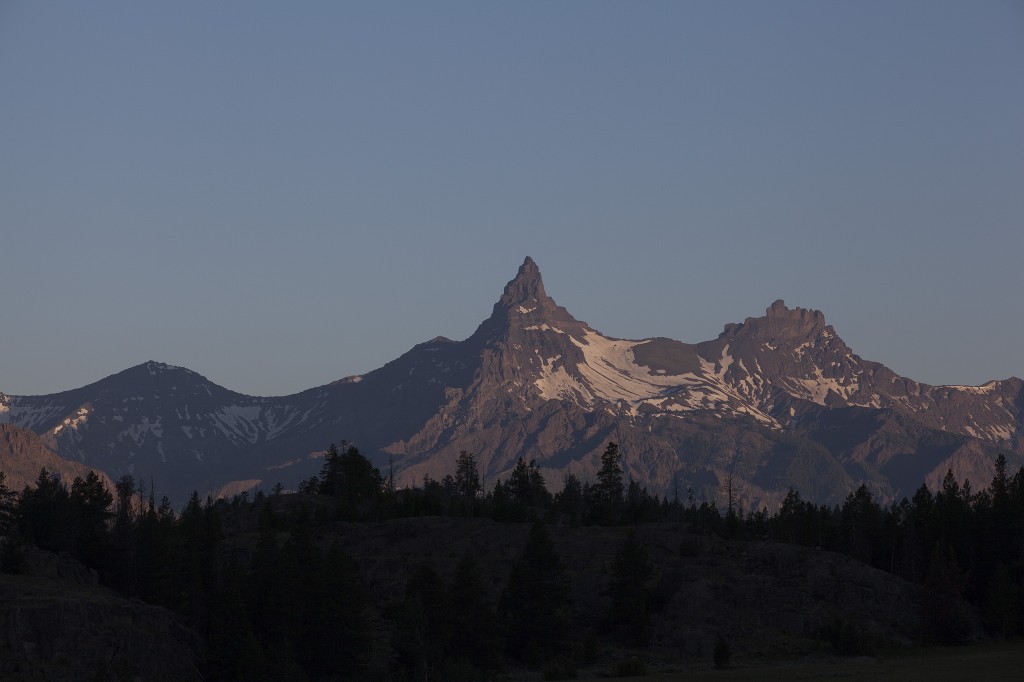
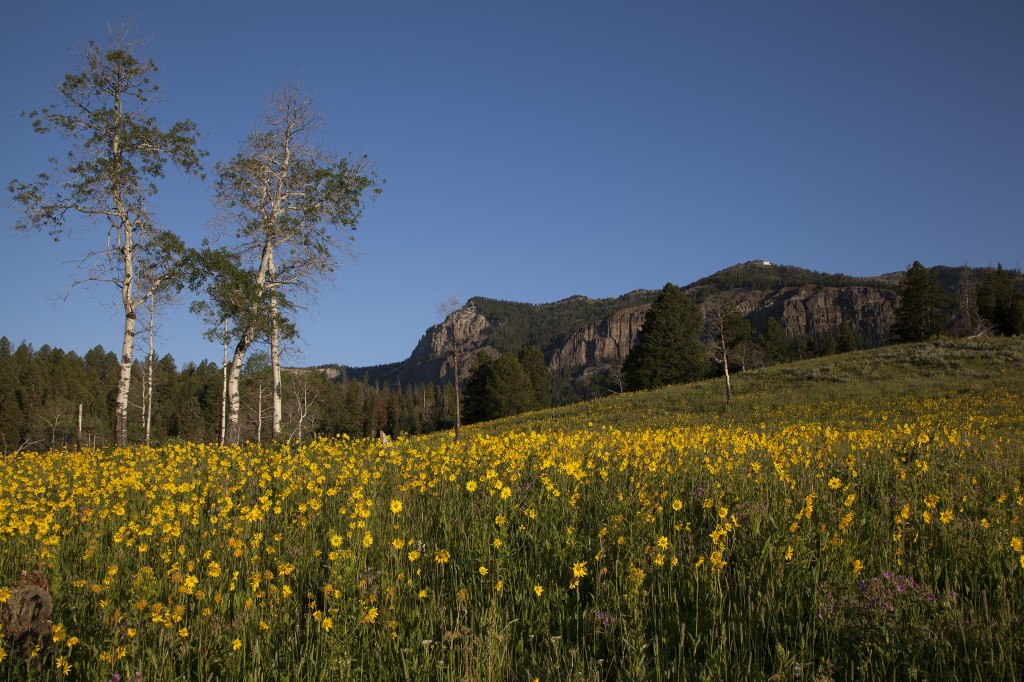


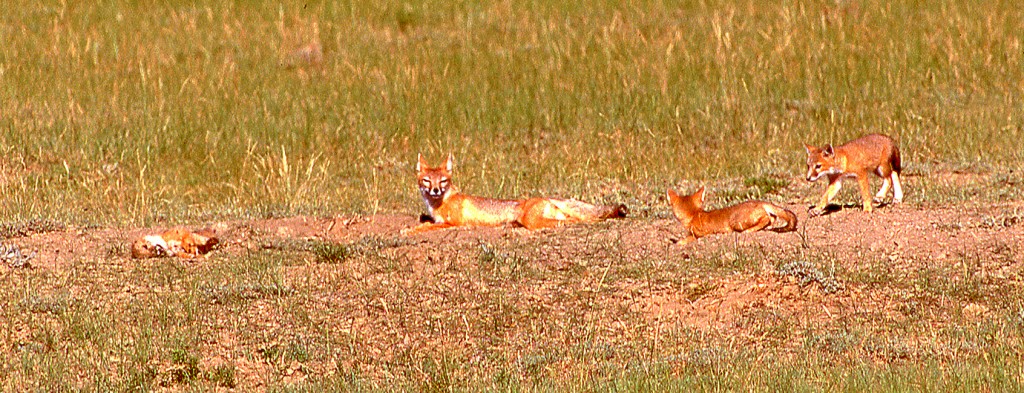
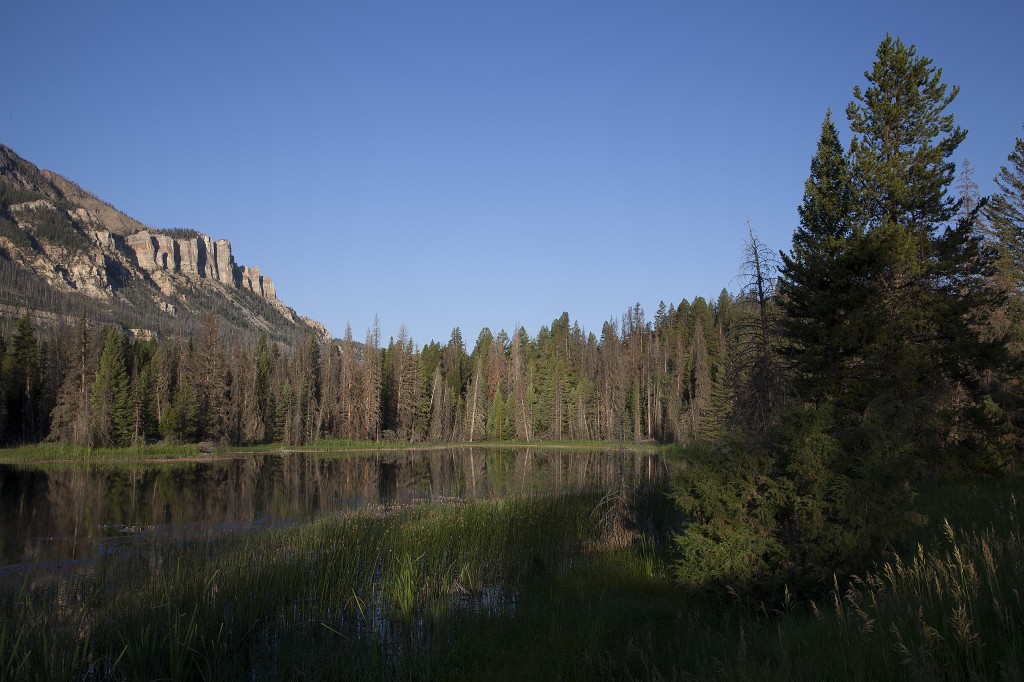
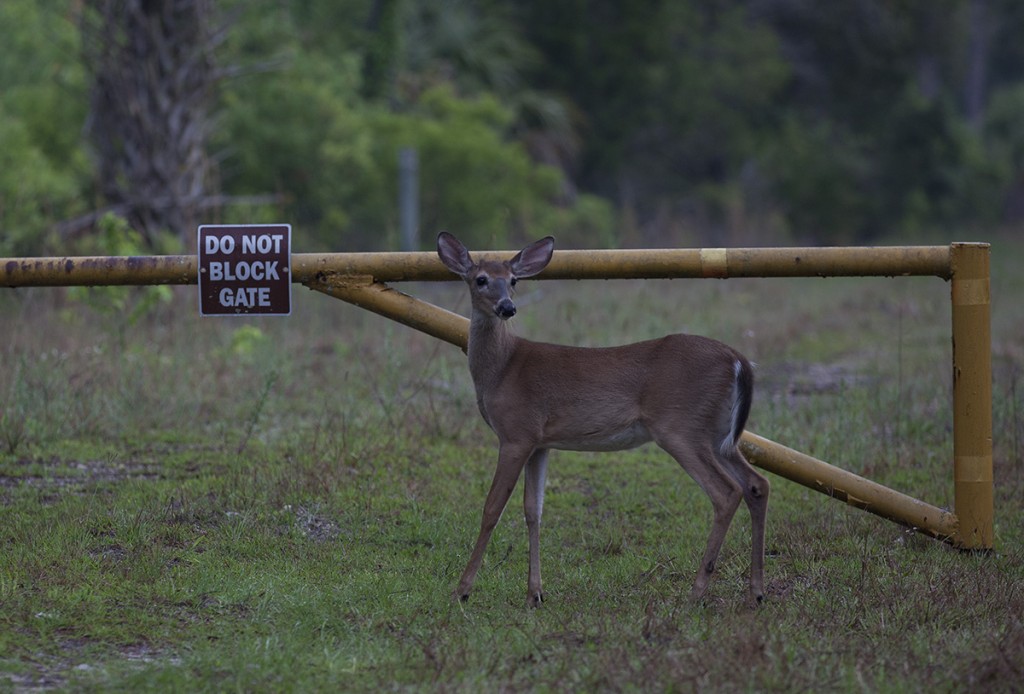
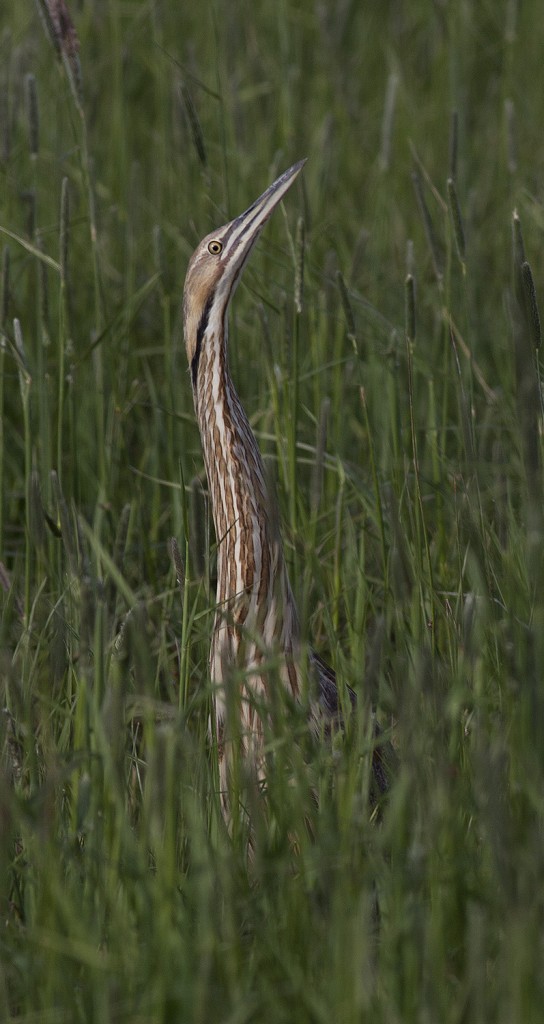
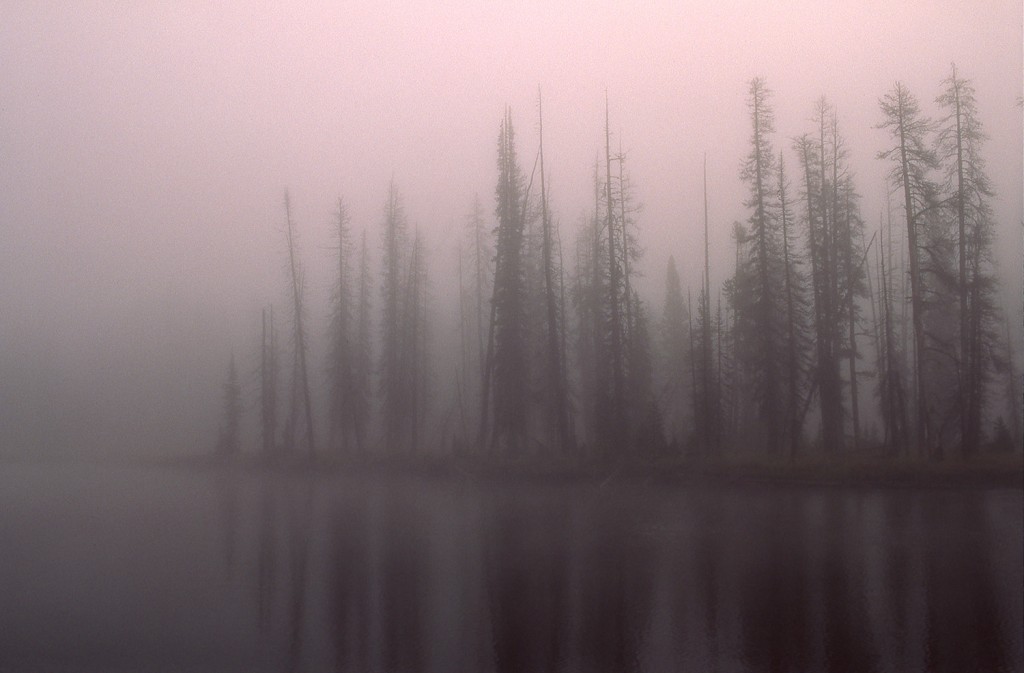
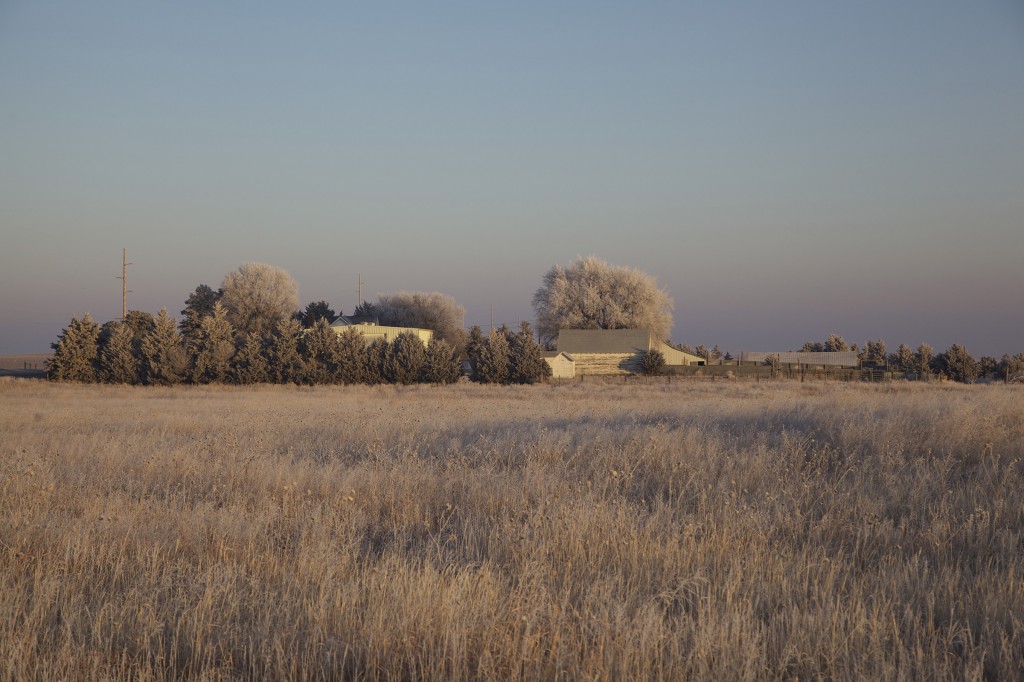
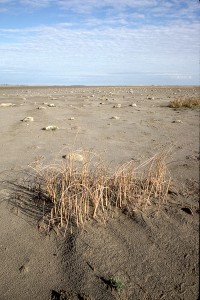
Leave a Reply
You must be logged in to post a comment.